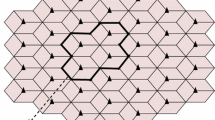Abstract
The penetration of multitude smart devices and billions of Internet of Things (IoT) devices have demanded enhanced data speed and diversified network services. The 5th Generation cellular communication has already been rolled out in many countries. Naturally, 5G and Beyond 5G (B5G) networks have to accommodate variety of services with an exponentially large number of devices. 100% coverage is one of the goals of 5G network. To meet this demand dense small cells are proposed. This places excessive stress on the network service provider in terms of capital and operational expenditure. Moreover, as the coverage area is small, most Base Stations (BS) will be serving a fewer devices. Thus, the energy efficiency per BS will be reduced drastically. In this sense, location intelligence based on energy saving is an important research topic. In this paper, we present a Genetic Algorithm (GA) approach, and its application in estimating the best location for 5G base stations reducing overall energy consumption. Our simulation results show better energy efficiency than the legacy procedures.
Access this chapter
Tax calculation will be finalised at checkout
Purchases are for personal use only
Similar content being viewed by others
References
Kumar S, Agrawal T, Singh P (2016) A future communication technology: 5G. Int J Future Gener Commun Netw 9(1):303–310
Agiwal M, Roy A, Saxena N (2016) Next generation 5G wireless networks: a comprehensive survey. IEEE Commun Surv Tutor 18(3):1617–1655
Jalili B, Dianati M (2010) Application of taboo search and genetic algorithm in planning and optimization of UMTS radio networks. In: International wireless communications and mobile computing conference. ACM, pp 143–147
Wang C, Lee C, Wu X (2020) A Coverage-based location approach and performance evaluation for the deployment of 5G base stations. IEEE Access 8:123320–123333
Han T, Ansari N (2012) Optimizing cell size for energy saving in cellular networks with hybrid energy supplies. In: IEEE global communications conference (GLOBECOM), pp 5189–5193
Sakthivel S, Suresh R (2006) A genetic algorithm approach to solve mobile base station location problem. Int J SoftComput 1(3):160–165
Taranto RD, Muppirisetty S, Raulefs R, Slock D, Svensson T, Wymeersch H (2014) Location-aware communications for 5G networks: how location information can improve scalability, latency, and robustness of 5G. IEEE Signal Process Mag 31(6):102–112
Holma H, Toskala A (2009) LTE for UMTS-OFDMA and SC-FDMA based radio access. Wiley
Ying Z, et al (2016) Multiplexing efficiency of high order MIMO in mobile terminal for 5G communication at 15 GHz. In: International symposium on antennas and propagation (ISAP), pp 594–595
Kanhere O, Rappaport TS (2021) Position location for futuristic cellular communications: 5G and beyond. IEEE Commun Mag 59(1):70–75
Pedersen T, Fleury BH (2018) Whitepaper on new localization methods for 5G wireless systems and the internet-of-things. In: COST action CA15104 IRACON
Author information
Authors and Affiliations
Corresponding author
Editor information
Editors and Affiliations
Rights and permissions
Copyright information
© 2022 The Author(s), under exclusive license to Springer Nature Singapore Pte Ltd.
About this paper
Cite this paper
Sachan, R., Dash, S., Sahu, B.J.R. (2022). Energy Efficient Base Station Location Optimization for Green B5G Networks. In: Mallick, P.K., Bhoi, A.K., González-Briones, A., Pattnaik, P.K. (eds) Electronic Systems and Intelligent Computing. Lecture Notes in Electrical Engineering, vol 860. Springer, Singapore. https://doi.org/10.1007/978-981-16-9488-2_41
Download citation
DOI: https://doi.org/10.1007/978-981-16-9488-2_41
Published:
Publisher Name: Springer, Singapore
Print ISBN: 978-981-16-9487-5
Online ISBN: 978-981-16-9488-2
eBook Packages: EngineeringEngineering (R0)




